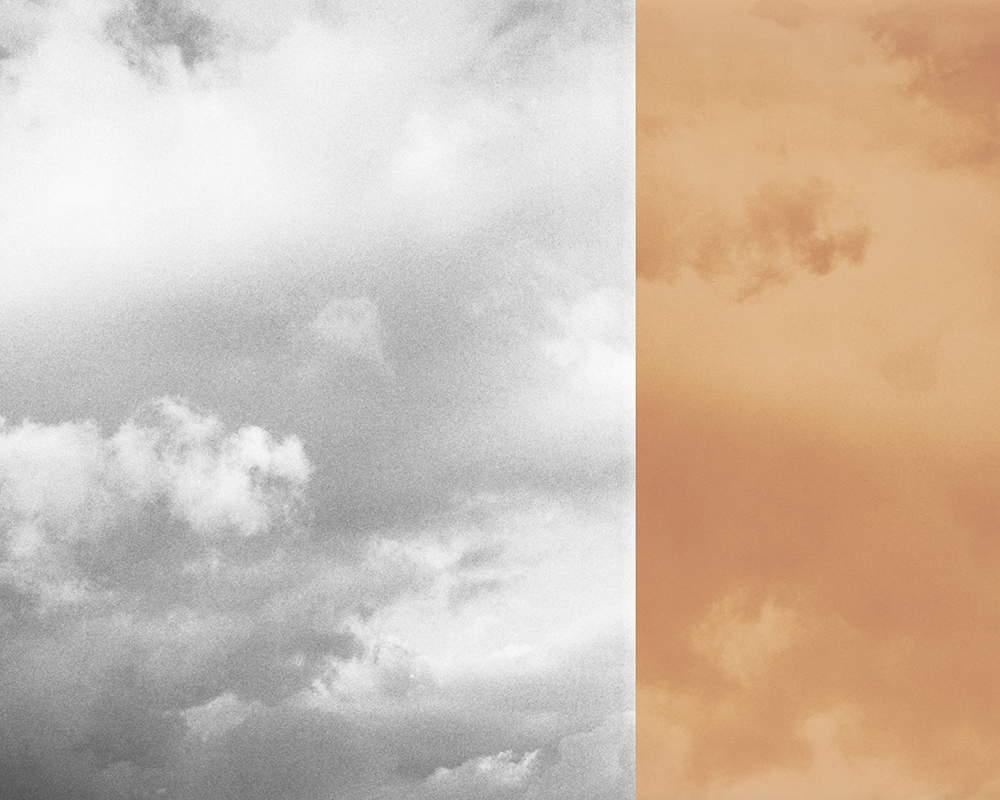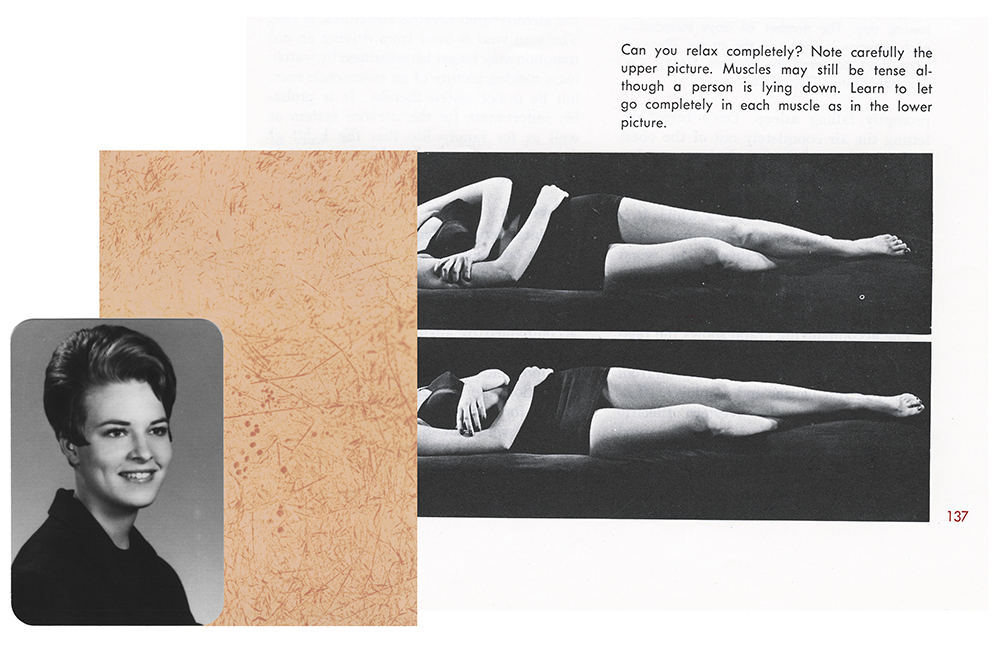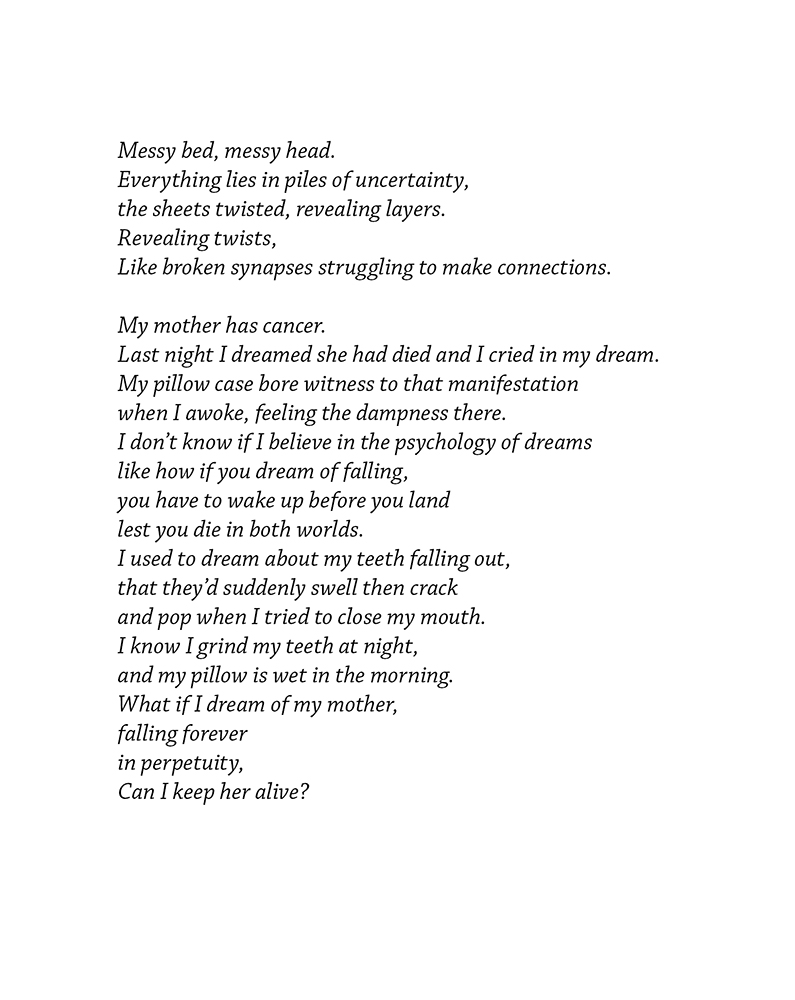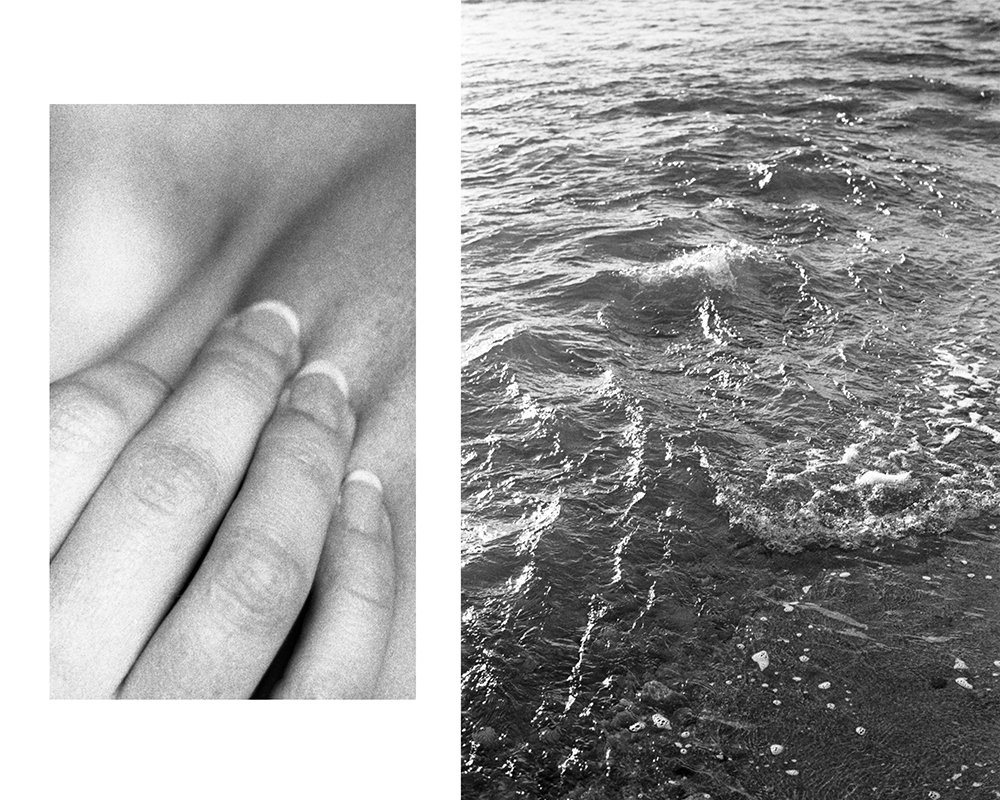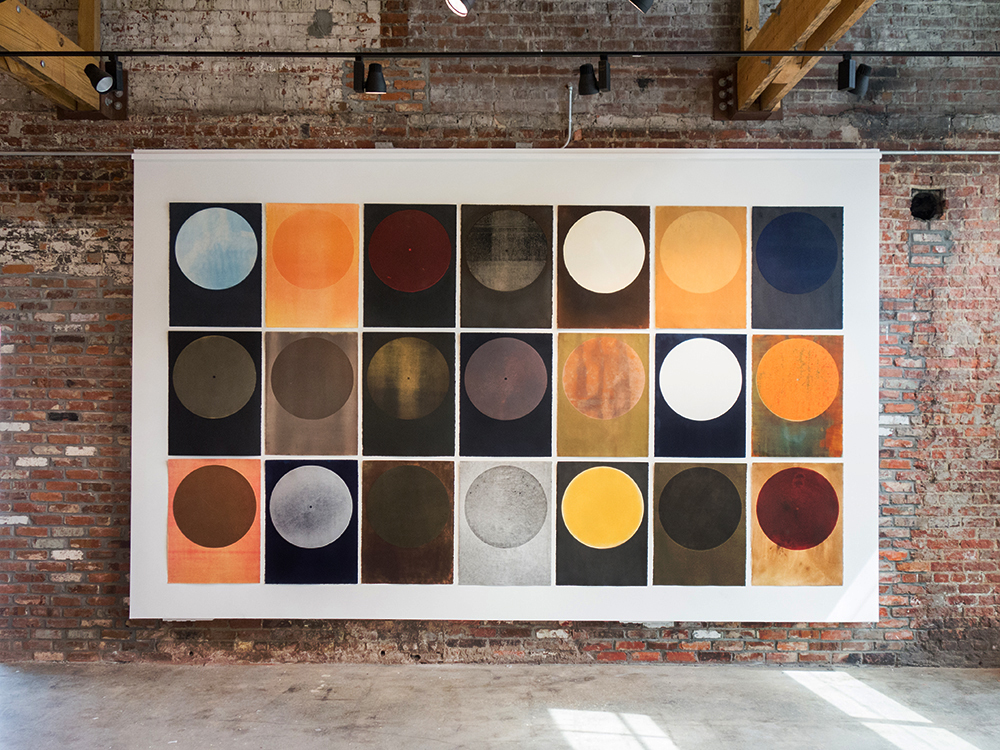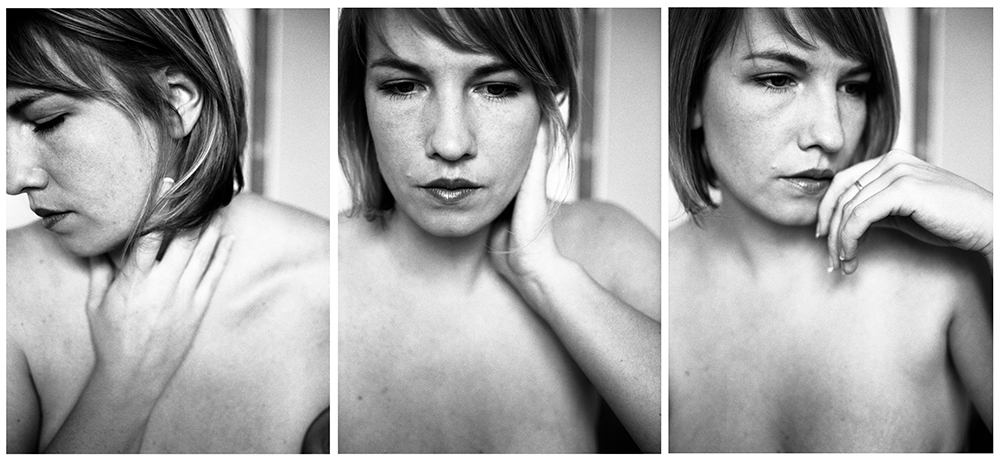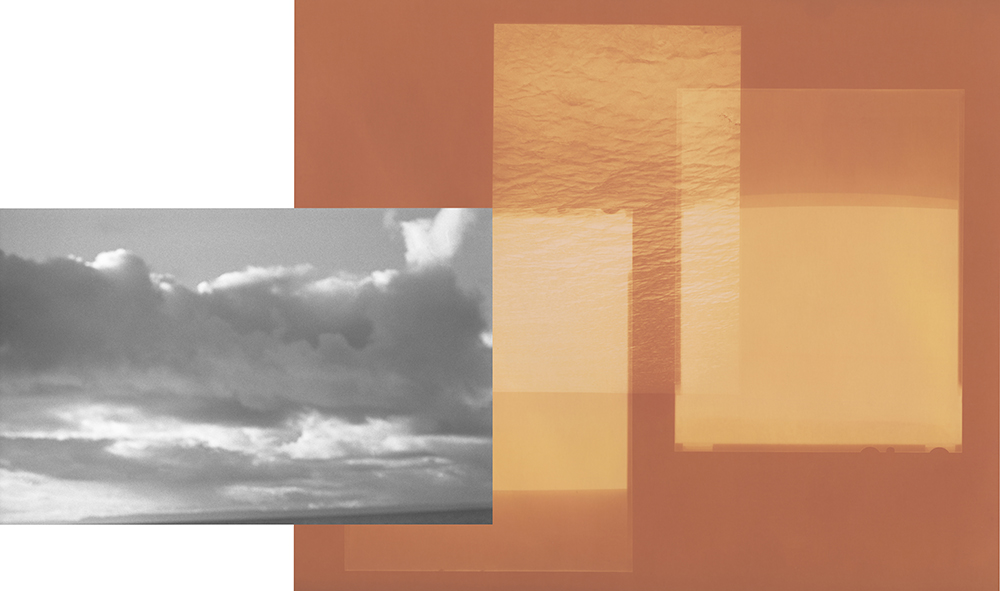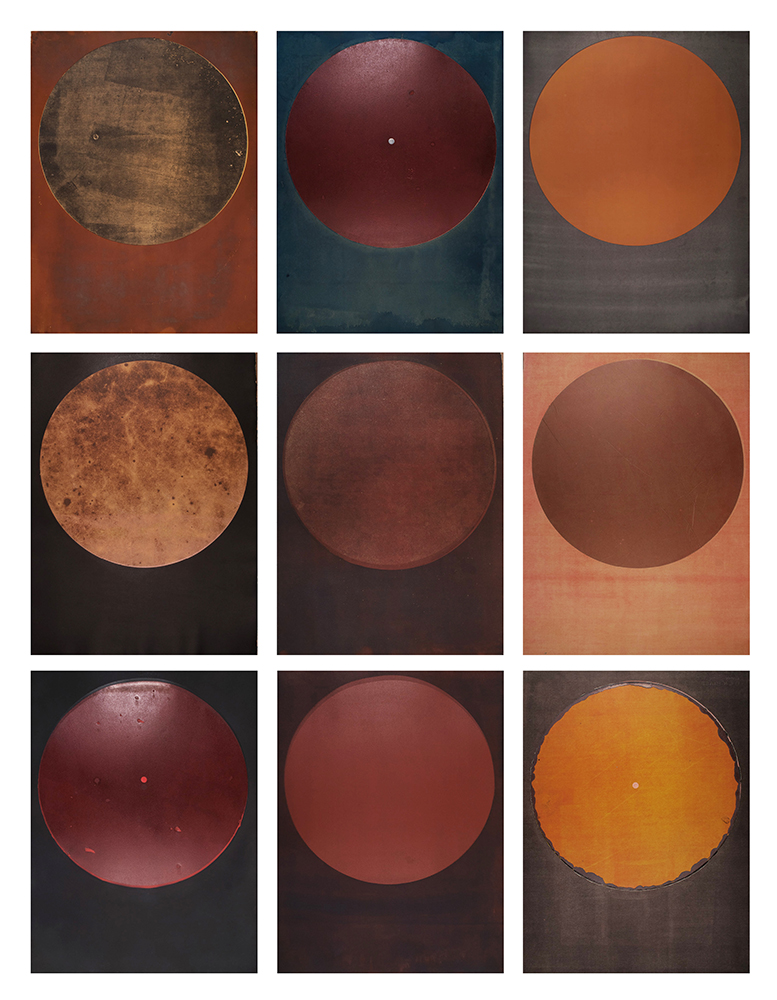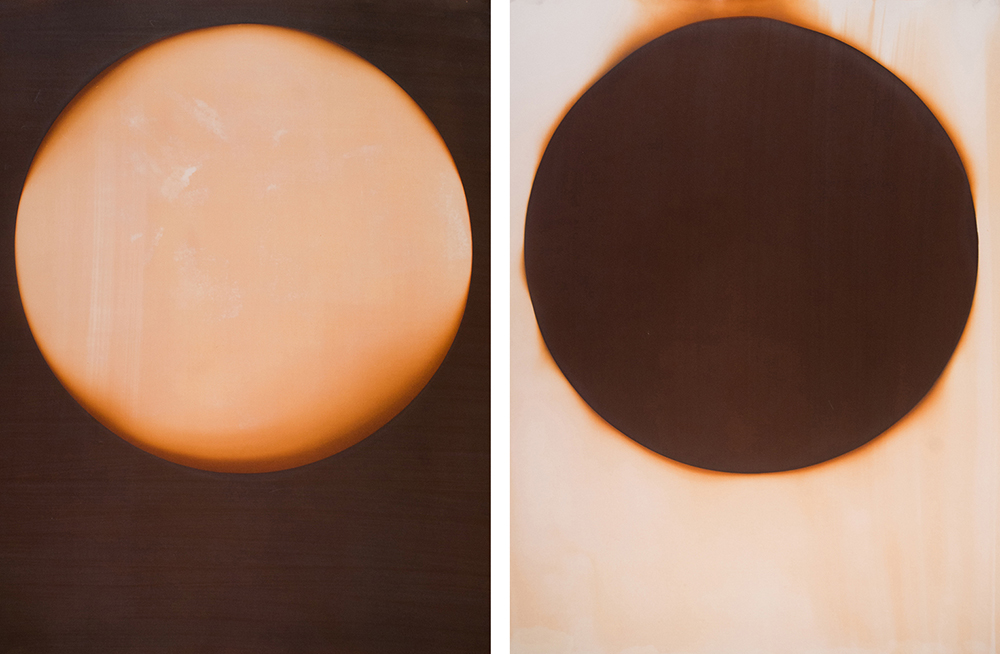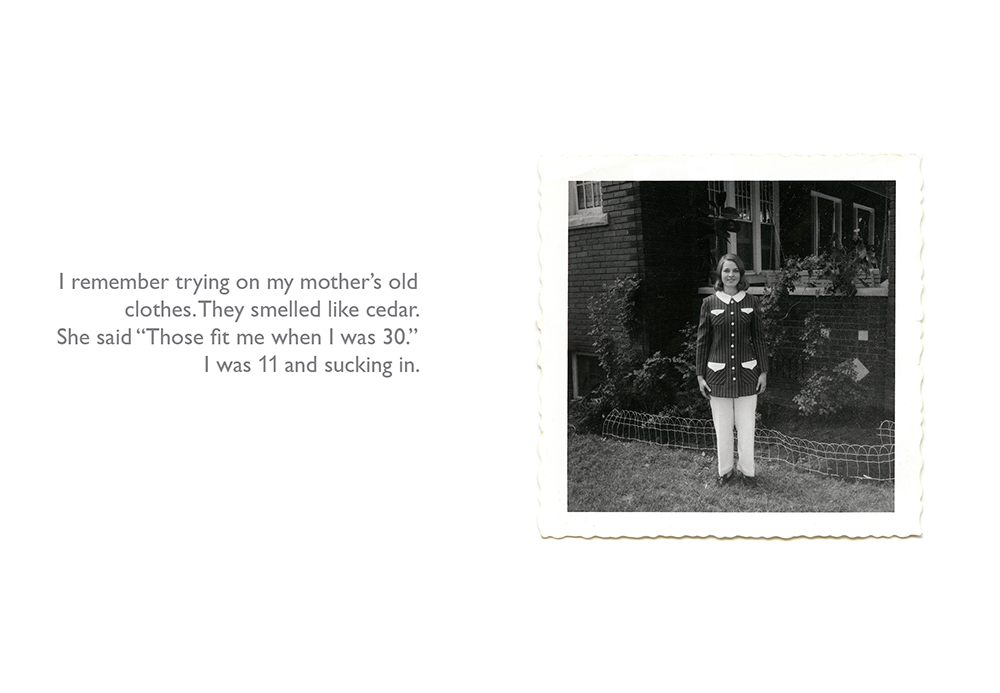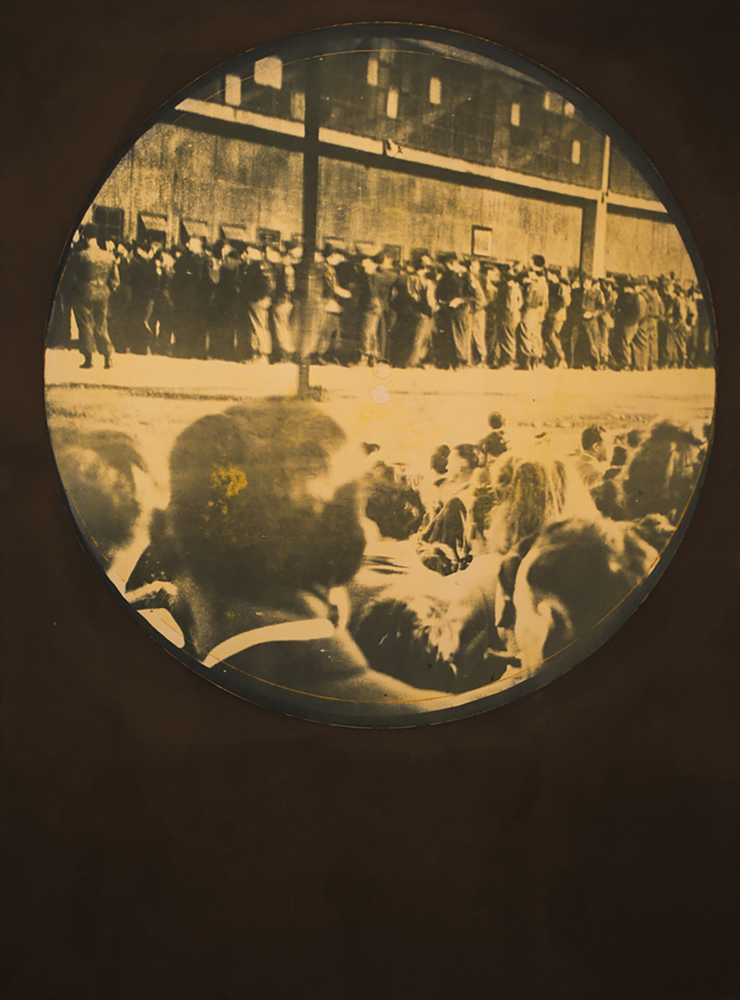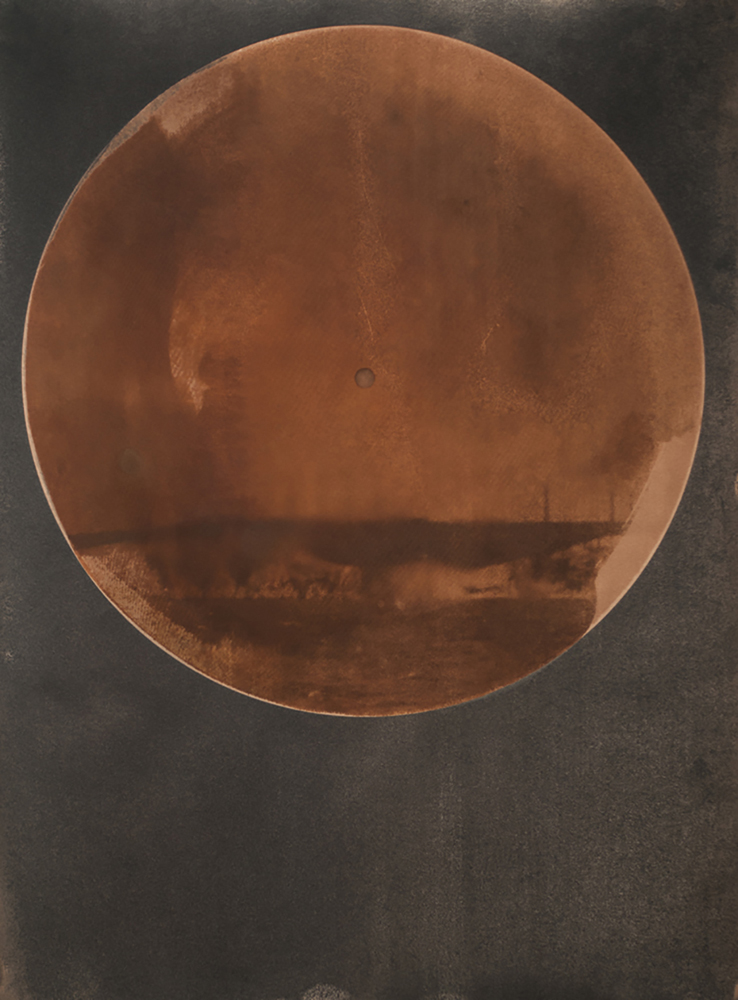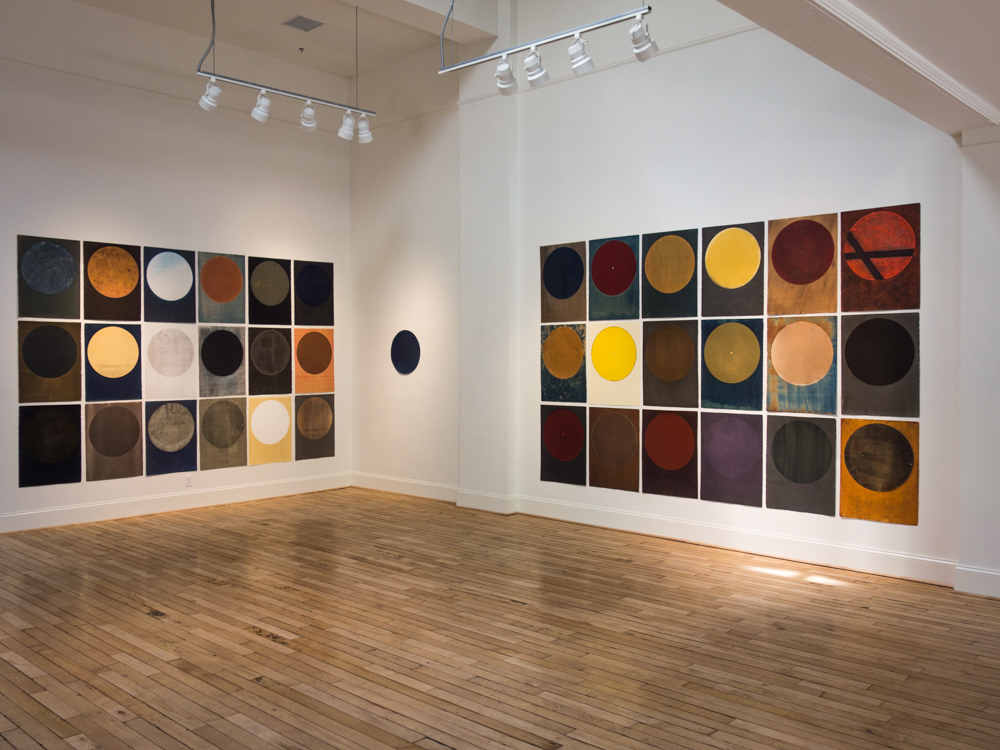Photographers on Photographers: Harrison D. Walker and Patricia Swanson
This month, we feature our annual August project, Photographers on Photographers, where visual artists interview colleagues they admire. Thank you to all who have participated for their time, energies and for efforts. Today we are happy to share this interview with Harrison D. Walker and Patricia Swanson. – Aline Smithson and Brennan Booker
I first met Patricia Swanson while in graduate school at Tyler School of Art in Philadelphia. Immediately we found a kinship – working into the night in the studio, conversations often ending in tears from laughter. We both are drawn to the handmade, the printed object, the form of the book, and alternative methods in photographic imaging. We had wonderful conversations about photography, processes, baking, our mutual love for chocolate, disdain for raisins, and so much more. Even though we no longer live in the same city, Patricia and I continue to talk regularly about work – often bouncing ideas, images, or thoughts off each other – whether through a quick text, a letter in the mail, or a photo. I hope this offers a glimpse into the way we think about and navigate our respective artistic practices.
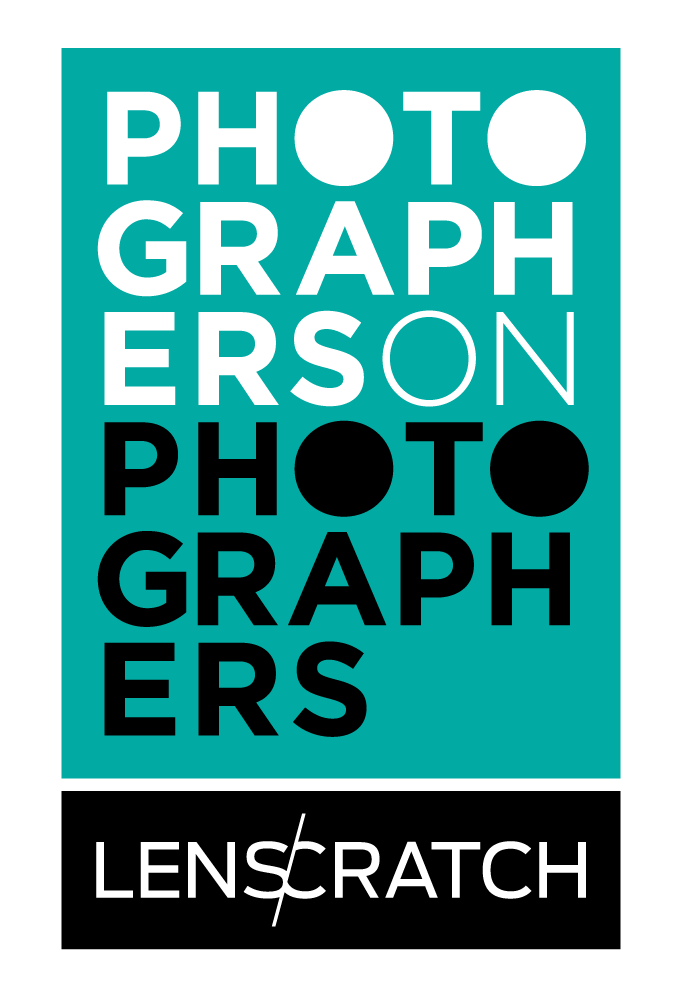 Patricia Swanson (b. 1988) grew up in Lynnwood, WA and is now based in Philadelphia, PA. Her work examines the relationships between personal and universal narratives and how those become interconnected through the common ground of human experience. Her process usually starts with a question and uses writing and image making in an attempt to find answers. Patricia works with both traditional and digital photographic processes that allow her to use photography as a visual experience that is both tactile and intimate to create empathetic connections between her and the viewer. Patricia received her BA in Studio Arts and English Literature at Western Washington University and her MFA in Photography at the Tyler School of Art.
Patricia Swanson (b. 1988) grew up in Lynnwood, WA and is now based in Philadelphia, PA. Her work examines the relationships between personal and universal narratives and how those become interconnected through the common ground of human experience. Her process usually starts with a question and uses writing and image making in an attempt to find answers. Patricia works with both traditional and digital photographic processes that allow her to use photography as a visual experience that is both tactile and intimate to create empathetic connections between her and the viewer. Patricia received her BA in Studio Arts and English Literature at Western Washington University and her MFA in Photography at the Tyler School of Art.
Harrison D. Walker (b. 1988) is an artist living in San Marcos, TX. His research is driven by interests in the intersections of The Printed Object, The Archive, Chemistry, Astronomy, and Chance; he employs the visual alchemy of printmaking, drawing, and photographic materials to create forms that visually reference the celestial, the post-apocalyptic, and the otherworldly.
Walker received an MFA in Photography at Tyler School of Art, Temple University, Philadelphia, PA and has since served as visiting faculty at Maine Media Workshops + College in Rockport, ME; Wesleyan College in Macon, GA; and the University of Alabama Huntsville. Walker currently works in the Digital Media Department at Texas State University Alkek Library. Walker’s work can be found at Corey Daniels Gallery, Wells, Maine; Candela Gallery, Richmond, Virginia; and The Print Center in Philadelphia, PA. He has recently shown at Athens Institute of Contemporary Art, Athens, GA; Gallery 1/1, Seattle, WA; and TRAX Visual Arts Center, Lake City, SC. His work has been featured in The Hand Magazine, Photo-Emphasis and Streit House Space.
Harrison D. Walker: As a photographer that focuses a lot of my own time into learning and thinking about the chemical make up of photographic imagery, I find in my own practice an interesting relationship between making recipes for photographs and recipes for food. What is your favorite thing to bake/cook?
Patricia Swanson: Hahah! I feel like this is such a great question to explain the different ways the two of us make. I feel like your exploration of chemicals as well as your baking is through repeated trial and error until you find the best way to do something or all the variations. While I may do that somewhat, I also use baking as a way to try completely new things and learn something new much like how I get propelled in my work usually by wanting to learn something new. With that said, my most “what I make to impress other people” is pie, more specifically chicken pot pie. I don’t make it from a recipe and its different every time but it’s always delicious.
HW: What photographic processes are you most drawn to? How do digital methods feed into your thinking when creating a series or work?
PS: I’m drawn to more analog or alternative photographic processes because I love the time and physical labor attached to working with those methods. The act of making a photograph becomes a full body experience and because of that I feel like my work becomes an extension of myself. Plus there’s an undeniable romance to the “magic” of photography when you have to wait for a chemical reaction and POOF an image appears. That doesn’t mean I’m a total luddite, I think any method of image-making is fair game so I often incorporate digital methods when it pushes me closer to a new result or when I find limitations with an analog method. Though I’ll add that I don’t think I’ll ever get over my love for film and working in the darkroom.
HW: My work tends to be less personal, whereas your work tends to really feed off of your own personal experiences and it seems to really translate to the viewer in a great way. How do you navigate a balance between sharing personal stories in a way that continues to feel approachable while not feeling like you are compromising your privacy?
PS: This is such a good question. I think the best way to start answering is to say that I am a deeply emotional person and I didn’t really learn until this year that saying I am emotional is not a negative thing, it’s actually one of the most important things about me. I don’t shy away from going deep within myself or with others and because of that I have always valued authenticity, honesty, and vulnerability.
So when I made my first book, Revelation, which is a collection of very short stories and memories from my life up to that point, I realized there was a great power in my willingness to be open and vulnerable with the viewer because after reading it people would often, unprompted, start telling me their own stories. I realized that even though I may make images or write about hyper-specific personal things, one of the beautiful things about photography (or art in general) is the innate ambiguity and I believe that my honesty allows people in and allows them to see themselves in my work and creates an empathic bond.
As far as privacy goes, I guess I don’t worry about that as much because I share things with the world when I’m ready to share them. With my current project, Remembering to Breathe, which is about my ongoing process of coming to terms with and accepting my mom dying of cancer, I’ve been much slower to share with others. But as much as making that work has been part of a healing process, so to has been sharing it and now I’m looking forward to making a new book of that work during my residency at the Philadelphia Photo Arts Center in November.
I would also say there are a lot of things I reference in my work that people would never know the deeper meaning behind unless I directly told them but that doesn’t affect the overall understanding of what I do, they’re more like easter eggs that if you know me you might pick up on.
PS: I remember in one of your crits in school that our program director asked you “who do you make work for” and you said you make it for yourself. Do you still find that to be true? And how do you navigate your own balance between the personal and the public?
HW: Yes, I still make work for myself. It feels important for me to try to do something in the studio daily, whether that is making a print, looking through archival photos, researching, sketching, etc. The cyclical nature of my practice tends to feed itself, one thing often leading to something new. I don’t necessarily think of my work as very personal, however I do desire others to respond to or feel a connection to my work. My work is less so about pointing at something in particular or critiquing something and more so about visual experience, perception, and association.
PS: I think we both make use of archive in our work, mine is a personal archive while yours is derived from historical archive. You have also built up an archive in your own work with your manual and the footnotes. Where do you find inspiration from working with and creating an archive? Are there specific inspirations that lead you to work in that way?
HW: I am drawn to working with archival imagery because I like the act of digging through photos that may not often see the light of day in order to re-engage with them. Sometimes the search is digital, but recently I have found myself visiting several physical archives. The experience of looking at photographs is so much better when you get to flip through a stack of photographs, documents, and ephemera of the like. I often don’t know what I am looking for until I find it.
I also began to understand that sometimes the camera acted more as a barrier than as a tool in my creative practice. I am, and have always been, excited by images and I think that the way I think about photography lends itself more to appropriating and re-interpreting imagery rather than creating new images. But, I do still make ‘traditional’ photographs sometimes!
HW: How do you continue to be a productive practicing artist? Do you have a studio in Philly? Work from a home studio? Residencies?
PS: Figuring out a life/work flow was hard right after grad school after losing my studio at school. However, I’ve been fortunate to always have access to a lab and so I found that even if I didn’t have a clear direction, that I could always shoot a roll here or there and make prints for the sake of being active and that always ends up leading to something. Even though I go through slow seasons, I never stop making because it’s how I choose to channel and process and attempt to better understand myself and the world.
Last summer I had the opportunity to be a part of my first residency at Jasper Studios in Philadelphia, and having that dedicated time and space was incredibly motivating, I love a deadline. I was able to maintain a studio in that building after my residency ended over this last year but I just moved to a new place in West Philly where I’ll be able to move my studio into my home and I’m actually pretty excited about that.
HW: Is there one artist, person, author, musician that feels the most influential to your practice?
PS: Hmmm, I would say one of my biggest influences for the last couple of years has been the writing of Rebecca Solnit. The way she intertwines personal narrative with historical references is fascinating. I feel like she’s taking me on a journey where her own self-reflection allows me to better understand myself. As for an influential artist, I would say Moyra Davey, both her writing and her work hits very close to me, I love the way her images celebrate the smallest moments and how the mailing of her prints takes the impact of a piece of art and pushes it outside of the usual artist-to-gallery framework and expands it into the world.
Posts on Lenscratch may not be reproduced without the permission of the Lenscratch staff and the photographer.
Recommended
-
Earth Week: Aaron Huey: Wallpaper for the End of the WorldApril 26th, 2024
-
Earth Week: Casey Lance Brown: KudzillaApril 25th, 2024
-
Tara Sellios: Ask Now the BeastsApril 6th, 2024
-
ALEXIS MARTINO: The Collapsing Panorama April 4th, 2024
-
Emilio Rojas: On Gloria Anzaldúa’s Borderlands: The New MestizaMarch 30th, 2024

